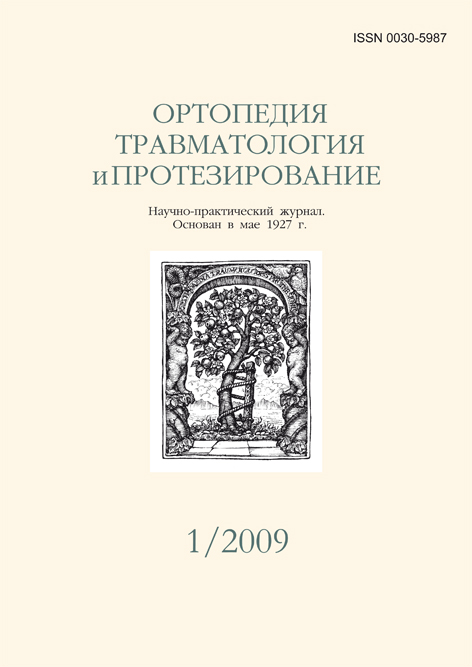The spread of blockade after brachial plexus anaesthesia with different approaches
DOI:
https://doi.org/10.15674/0030-59872009192-96Keywords:
brachial plexus, anaesthesiaAbstract
The spread of the motor, sensory and sympathetic block (temperature elevation at least by 1°C) 20 minutes after brachial plexus anaesthesia with the interscalene (n = 15), supraclavicular (n = 26) and coracoid infraclavicular (n = 22) approaches was assessed in 63 adult orthopaedic patients (34 males and 29 females). The most expressed prevalence of paresis or paralysis of the trapezius muscle in the interscalene group versus the supraclavicular one was statistically significant (bilateral Fisher's exact test: p = 0.0003) and clinically essential (3.2 times); differences in the sensory block were insignificant. In conclusion, anaesthesia of the trapezius muscle, required for operations on the shoulder girdle, is the most valuable advantage of the interscalene approach.References
- Боровиков В. STATISTICA. Искусство анализа данных на компьютере: Для профессионалов, 2-е изд. / В. Боровиков. — СПб.: Питер, 2003. — 688 с.
- Гилева М.Н. Проводниковая анестезия / М.Н. Гилева. — Харьков: РИП «Оригинал», 1995. — 112 с.
- Проводниковая анестезия при операциях на верхней трети плеча и плечевом суставе: материалы Междунар. конф. [«Актуальные проблемы анестезиологии и интенсивной терапии»]. — Донецк, 1993. — С. 11.
- Малрой М. Местная анестезия / М. Малрой. — М.: БИНОМ. — Лаборатория знаний, 2003. — 301 с.
- Міжнародна анатомічна номенклатура / За ред. І.І. Боб-рика, В.Г.Ковешнікова. — К.: Здоров’я, 2001. — 328 с.
- Пащук А.Ю. Регионарное обезболивание / А.Ю. Пащук. — М.: Медицина, 1987. — 160 с.
- Рафмелл Д.П. Регионарная анестезия / Д.П. Рафмелл, Д.М. Нил, К.М. Вискоуми. — М.: МЕДпресс-информ, 2007. — 272 с.
- Фесенко В.С. Модифікований доступ для безпечнішої міждрабинчастої блокади / В.С. Фесенко // Біль, знеболю-вання, інтенсивна терапія. — 2007. — № 3. — С. 6–11.
- Boezaart A.P. Anesthesia and Orthopedic Surgery / A.P. Boe-zaart. — NY: McGraw Hill, 2006. — 453 p.
- Brand L. A comparison of supraclavicular and axillary techniques for brachial plexus block / L. Brand, E.M. Papper // Anesthesiology. — 1961. — Vol. 22, № 2. — P. 226–229.
- Brown D.L. Supraclavicular nerve block: anatomic analysis of a method to prevent pneumothorax / D.L. Brown, D.R. Cahill, L.D. Bridenbaugh // Anesth. Analg. — 1993. — Vol. 76, № 3. — P. 530–534.
- Skin temperature after interscalene brachial plexus blockade / H. Hermanns, S. Braun, R. Werdehausen [et al.] // Reg. Anesth. Pain Med. — 2007. — Vol. 32, № 6. — P. 481–487.
- An evaluation of the supraclavicular plumb-bob technique for brachial plexus block by magnetic resonance imaging / O. Klaastad, T.R. VadeBoncouer, T. Tillung [et al.] // Anesth. Analg. — 2003. — Vol. 96, № 3. — P. 862–867.
- Uniform distribution of skin-temperature increase after different regional-anesthesia techniques of the lower extremity / R. Werdehausen, S. Braun, H. Hermanns [et al.] // Reg. Anesth. Pain Med. — 2007. — Vol. 32, № 1. — P. 73–78.
Downloads
How to Cite
Issue
Section
License
Copyright (c) 2014 Volodymyr Fesenko

This work is licensed under a Creative Commons Attribution 4.0 International License.
The authors retain the right of authorship of their manuscript and pass the journal the right of the first publication of this article, which automatically become available from the date of publication under the terms of Creative Commons Attribution License, which allows others to freely distribute the published manuscript with mandatory linking to authors of the original research and the first publication of this one in this journal.
Authors have the right to enter into a separate supplemental agreement on the additional non-exclusive distribution of manuscript in the form in which it was published by the journal (i.e. to put work in electronic storage of an institution or publish as a part of the book) while maintaining the reference to the first publication of the manuscript in this journal.
The editorial policy of the journal allows authors and encourages manuscript accommodation online (i.e. in storage of an institution or on the personal websites) as before submission of the manuscript to the editorial office, and during its editorial processing because it contributes to productive scientific discussion and positively affects the efficiency and dynamics of the published manuscript citation (see The Effect of Open Access).














